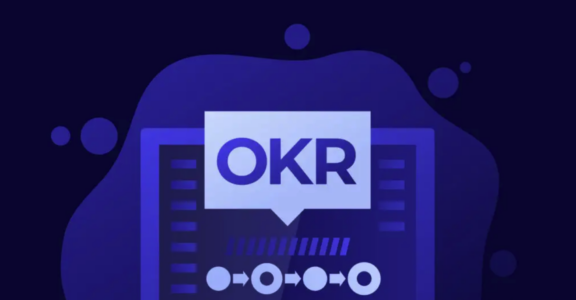The OKR-Aligned Roadmap: Driving Results Through Objectives and Key Results

The OKR-aligned roadmap is a strategic planning framework that directly ties roadmap initiatives to Objectives and Key Results (OKRs). This approach ensures every project, task, and initiative contributes to measurable outcomes, providing clarity and focus for teams and stakeholders alike.
In this article, we’ll break down the OKR-aligned roadmap, explore its benefits, and guide you through implementing it effectively.
What Is an OKR-Aligned Roadmap?
An OKR-aligned roadmap connects high-level goals (Objectives) with measurable targets (Key Results) and the specific actions or initiatives needed to achieve them. It ensures that teams stay aligned with strategic priorities and focuses efforts on work that drives tangible results.
This framework is particularly effective for organizations or teams that prioritize measurable outcomes over task completion.
Benefits of an OKR-Aligned Roadmap
- Strategic Focus: Keeps all efforts aligned with key business goals.
- Measurable Impact: Tracks progress against defined Key Results (KRs).
- Clarity for Teams: Clearly links initiatives to outcomes, ensuring everyone understands their role.
- Adaptability: Allows for adjustments to priorities while maintaining alignment with broader objectives.
Key Elements of an OKR-Aligned Roadmap
- Objectives: Broad, ambitious goals that define what you aim to achieve.
- Example: “Enhance customer satisfaction.”
- Key Results (KRs): Specific, measurable targets that track progress toward the Objective.
- Example: “Increase NPS from 30 to 50 by Q2.”
- Initiatives: Concrete actions or projects undertaken to achieve the Key Results.
- Example: “Redesign the onboarding process.”
How to Create an OKR-Aligned Roadmap
1. Define Your Objectives
Start with clear, strategic goals that align with your organization’s mission or department’s focus. Each Objective should inspire action and provide a clear sense of purpose.
Example Objective:
“Increase customer retention rates.”
2. Set Key Results
Identify 2–5 Key Results for each Objective. These should be specific, measurable, and time-bound targets that indicate progress toward the Objective.
Example Key Results for Customer Retention:
- Increase retention rates from 75% to 85% by Q2.
- Reduce churn by 10% in six months.
- Achieve a Customer Satisfaction Score (CSAT) of 90% by Q2.
3. Outline Initiatives
Determine the actions or projects required to achieve each Key Result. Initiatives should be actionable and prioritized based on their potential impact.
Example Initiatives for “Increase Retention Rates”:
- Implement a loyalty rewards program.
- Create a customer feedback loop via surveys.
- Automate onboarding communications.
4. Map Initiatives to a Timeline
Organize initiatives into a roadmap by assigning them to specific timeframes (e.g., quarters or sprints). This helps ensure timely execution while maintaining alignment with OKRs.
Example Timeline:
- Q1: Launch loyalty rewards program and redesign onboarding materials.
- Q2: Implement automated customer surveys and analyze churn trends.
5. Track and Adjust
Regularly review progress against Key Results to ensure the roadmap remains relevant. Adjust initiatives as necessary to address changing priorities or unexpected challenges.
Best Practices for an OKR-Aligned Roadmap
- Limit Objectives: Focus on 3–5 Objectives per quarter or cycle to avoid diluting efforts.
- Prioritize High-Impact Initiatives: Choose actions that will most effectively drive Key Results.
- Use Visual Tools: Platforms like Herdr.io, Asana, or Airtable can help visualize OKR alignment and track progress.
- Communicate Clearly: Share the roadmap regularly with stakeholders to maintain alignment and transparency.
- Review Quarterly: Align roadmaps with OKR review cycles to ensure continuous improvement.
Example OKR-Aligned Roadmap for a SaaS Company
| Objective | Key Result | Initiative | Timeline |
|---|---|---|---|
| Increase Customer Retention | Retention rates from 75% to 85% | Launch loyalty rewards program | Q1 2025 |
| Reduce churn by 10% | Automate onboarding communications | Q1 2025 | |
| CSAT score of 90% | Create a customer feedback loop | Q2 2025 | |
| Improve Product Usability | Time-to-value reduced by 30% | Redesign onboarding process | Q1 2025 |
| NPS increase from 40 to 50 | Conduct usability testing | Q2 2025 |
When to Use an OKR-Aligned Roadmap
An OKR-aligned roadmap works best when:
- Strategic Alignment is Critical: Ensuring that all efforts tie directly to measurable business outcomes.
- Outcomes Matter More Than Outputs: Focusing on results rather than simply completing tasks.
- You Need Team Clarity: Helping teams understand how their work contributes to larger goals.
Conclusion
The OKR-aligned roadmap is a results-driven framework that ensures every action taken directly contributes to your organization’s success. By tying Objectives and Key Results to concrete initiatives and organizing them on a clear timeline, this roadmap fosters strategic alignment, accountability, and adaptability.
Whether you’re managing a product, department, or project, adopting the OKR-aligned roadmap will help you stay focused on measurable outcomes.
Ready to build your OKR-aligned roadmap? Explore tools like Herdr.io for seamless roadmap creation and tracking!






